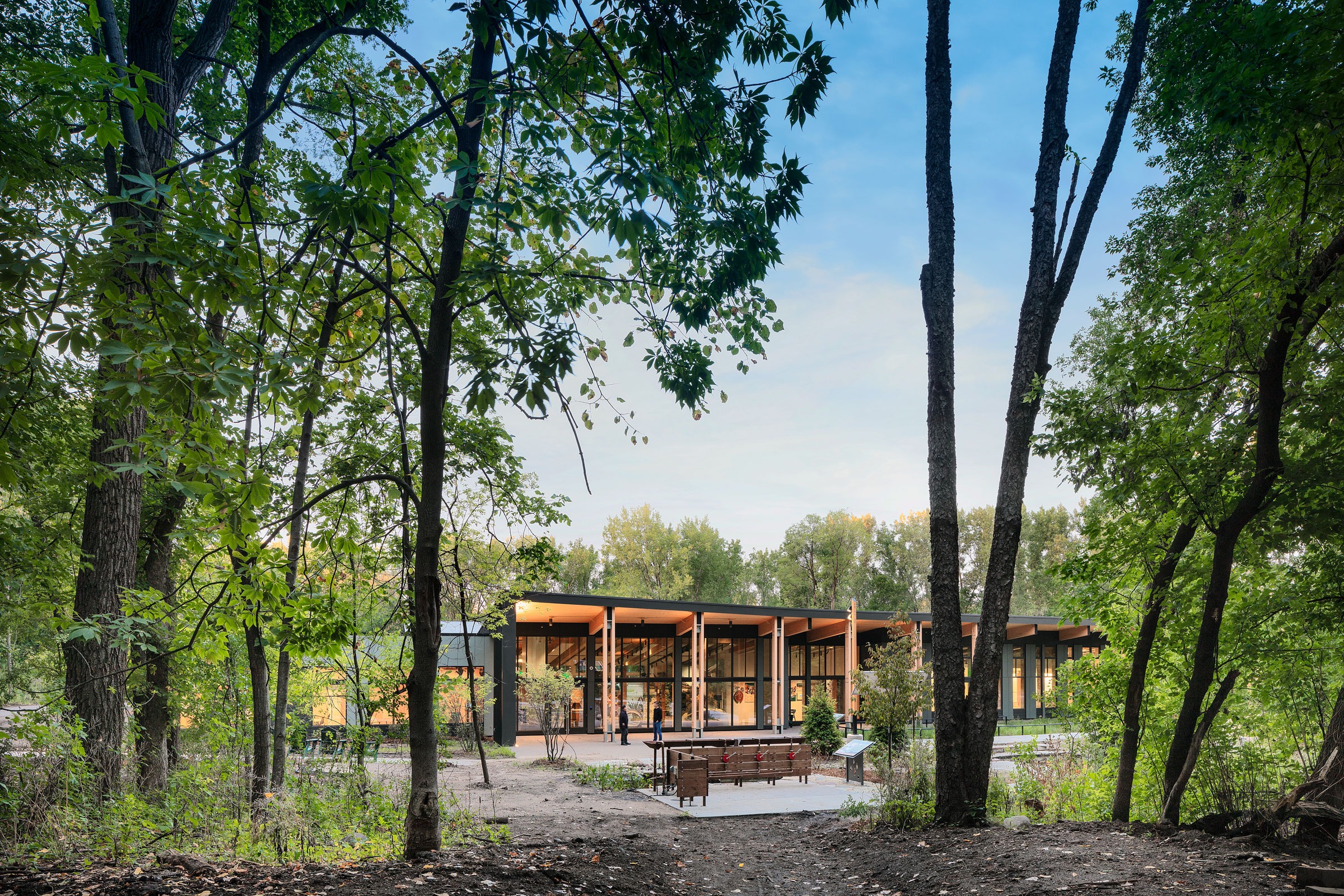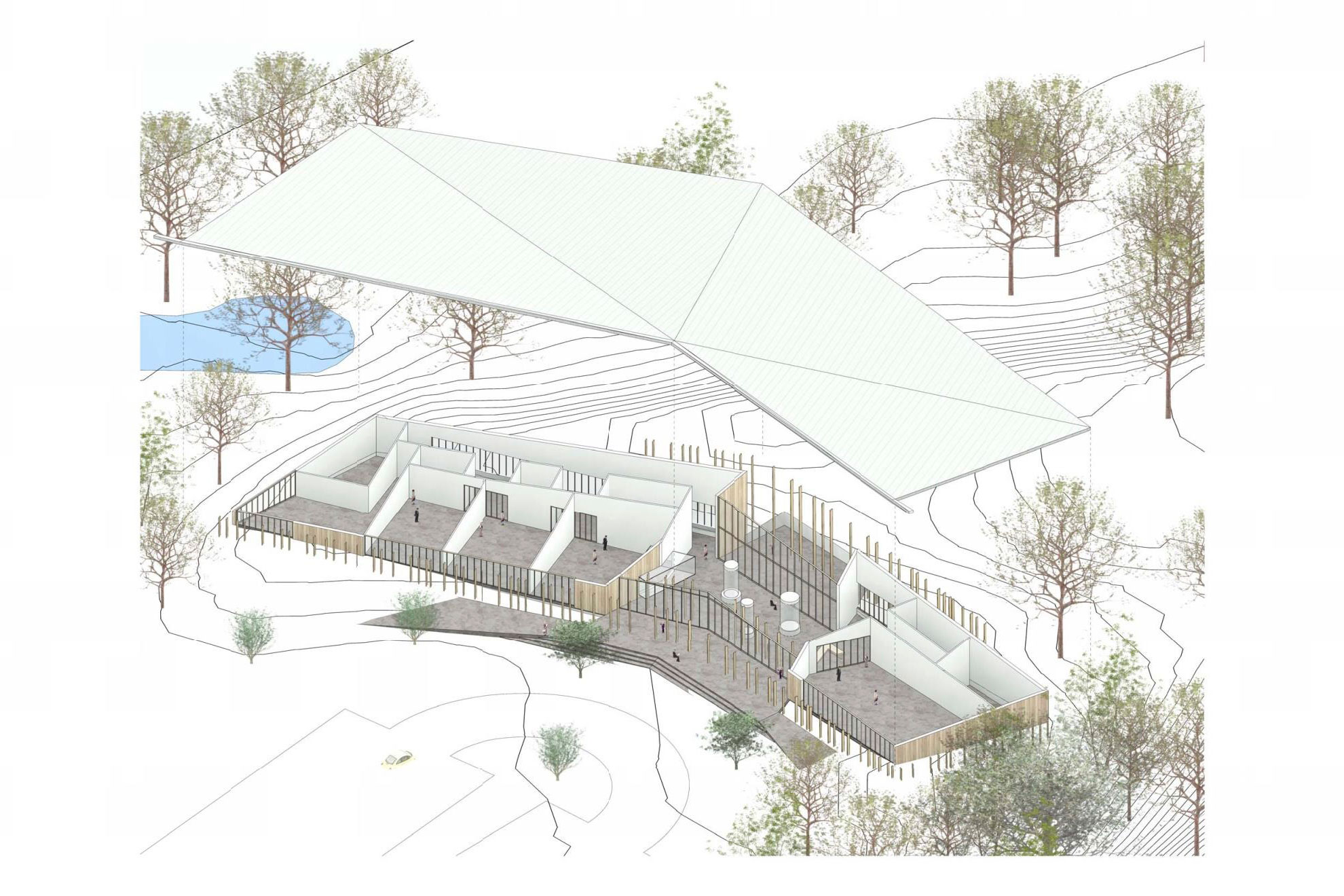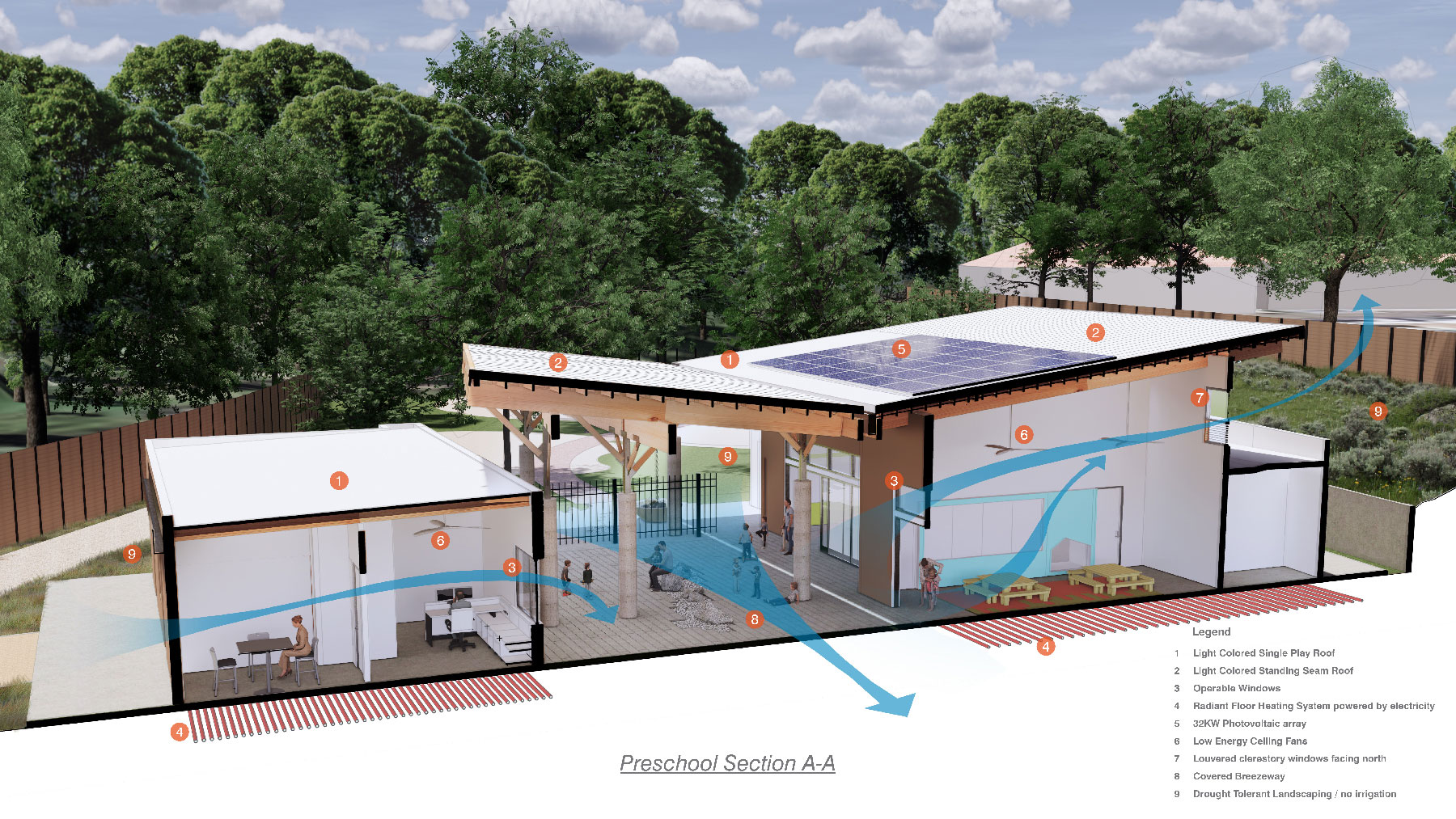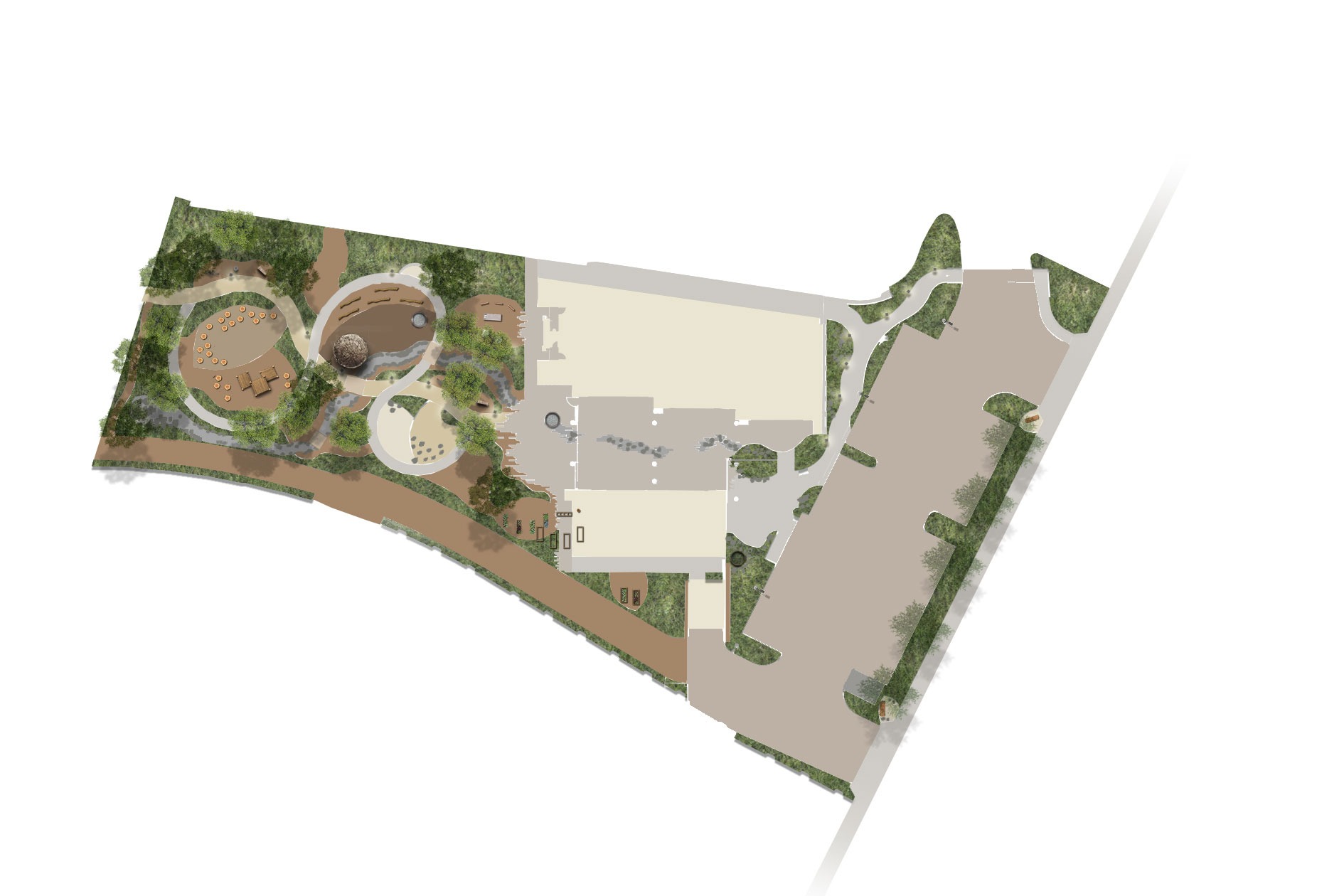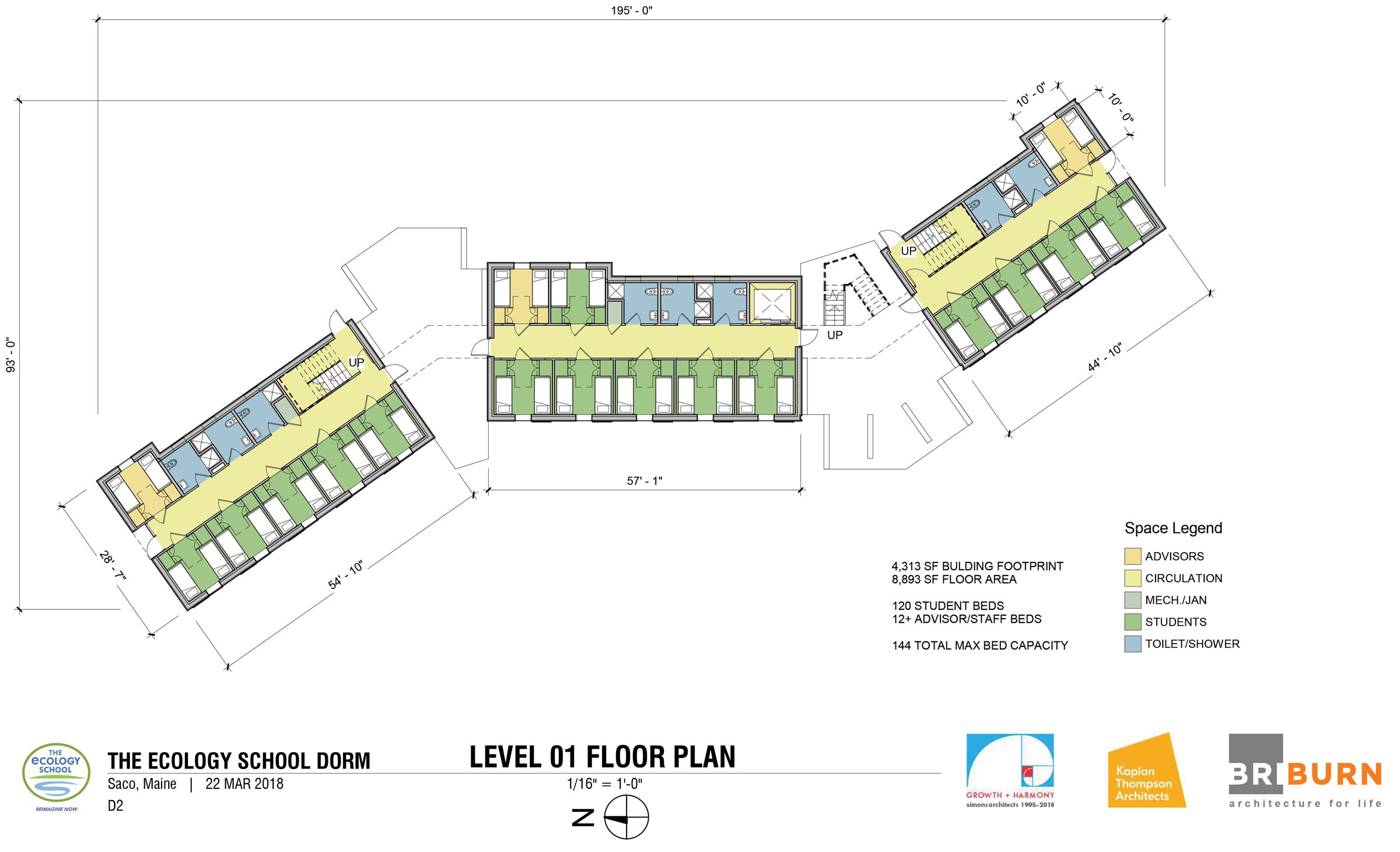Story at a glance:
- The Environmental Nature Center and Preschool in Newport Beach, designed by LPA Design Studios, was the region’s first LEED Platinum building.
- The Westwood Hills Nature Center in St. Louis Park, Minnesota, uses a geothermal wellfield.
- The Ecology School in Maine is designed around flexible classrooms that open up to nature.
It starts with a plot of land. You consider the slope of that land, the way the sun hits, the wind. You seek only the finest materials for your new building—sustainably harvested wood, recycled elements, maybe even decomposed granite. But ultimately what matters most is how it all fits together and whether people engage with your design at all.
“For me, designing for nature means thinking holistically about architecture—considering not just all of the design and engineering facets but also how architecture fits into a bigger picture to address issues of equity, accessibility, health and wellness, and climate,” says Glenn Waguespack, senior project designer at HGA. “How do we maximize positive impacts on people, and how do we think about the building’s future so its impact remains positive throughout its lifespan? We are at a critical juncture where we can choose to use new lenses by which we analyze and approach design.”
Taking a holistic approach—including architecture, landscape, and interiors—has also been crucial at LPA Design Studios, where Design Director Rick D’Amato recently worked on The Environmental Nature Center and Preschool in Newport Beach, California. They set out to design a top educational space while conserving energy and water and supporting the Environmental Nature Center (ENC)’s mission of sustainability. It’s now recognized as the first LEED Platinum building in the region.
“For me this was an environmental project and we had to get in there and support the concept. This was about learning; it wasn’t about, ‘Oh, well the architecture looks great on this,’ or ‘The landscape looks great on this.’ It’s how do we support the mission, and how does everything we do make that better?”

“We tuned the overhangs and windows so the custom-formed concrete feature walls will be in the sun in the Minnesota winter, capturing heat they’ll give off for thermal comfort,” Waguespack says of the Westwood Hills Nature Center project. “In summer our overhangs shade the corridor so the concrete absorbs heat from visitors and keeps them cooler. It’s a functional piece, but its textures reflect birch trees.” Photo by Pete Sieger
Leave No Trace
Fitting into the natural landscape was a key goal of Waguespack and the team at HGA when they designed Westwood Hills Nature Center—an oasis in the middle of St. Louis Park, Minnesota that quite literally connects people to nature. “The building is located as a gateway to the site, both physically—two trailheads begin and end there—and intellectually through its interpretive exhibits and expressive sustainability features. It sits on the threshold between two native landscape types: the prairie grassland and deciduous forest,” Waguespack says.
Many in the city of 45,000 may not even realize the new nature center, completed in June 2020, is there. Waguespack says it’s a hidden gem literally surrounded by the city. The reclaimed landscape was a former golf course purchased in the middle of the last century for public recreation, then cultivated into a nature center with landscape types you’d find throughout Minnesota.
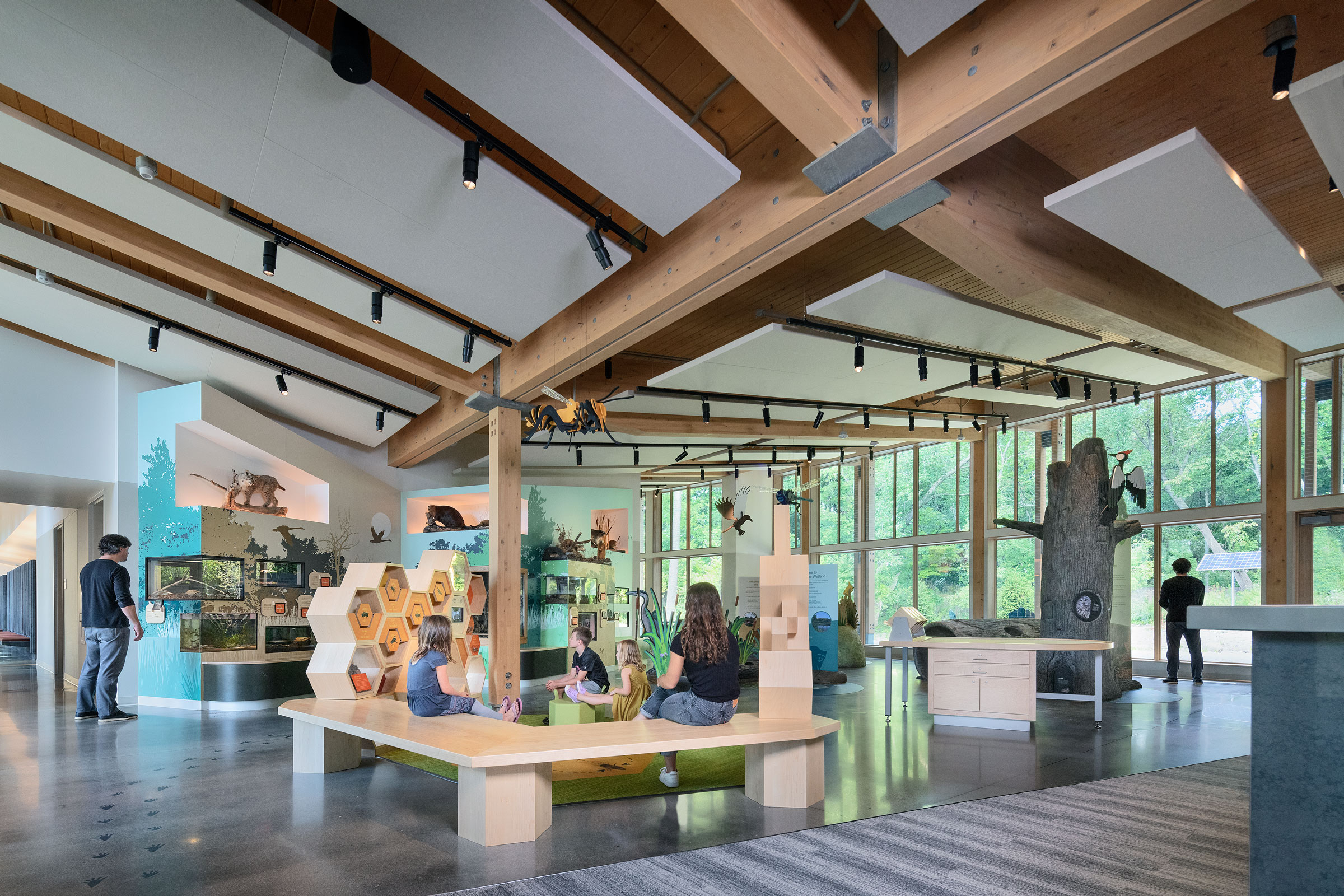
Alaskan Yellow Cedar was used for the glue-laminated columns, beams, and structural wood deck at Westwood Hills Nature Center. “We chose AYC because it’s naturally moisture-, insect-, and decay-resistant and doesn’t require a toxic pressure treatment that could compromise the indoor air quality if not encapsulated in a clear coat,” says HGA’s Glenn Waguespack. Photo by Pete Sieger
The HGA design team made sure every element of Westwood Hills Nature Center, from the building’s shape to all of its materials, factored in sustainability. “The building is oriented in plan to take advantage of solar angles and prevailing winds; its roof form opens the building up to views and maximizes daylight to reduce energy use,” Waguespack says. “From a systems standpoint, the biggest contributor to energy reduction is the geothermal wellfield, which uses the earth as a heat source for our radiant and forced air systems; heating loads are dominant in a cold climate like ours.” Lighting controls and a building automation system help the facility operator manage the building systems as efficiently as possible.
Managing Energy
Zero energy was a major goal and the primary challenge of the Westwood Hills Nature Center project in Minnesota. “We established an energy budget for the project that everyone from lighting design to exhibit design needed to meet,” Waguespack says. “We updated an energy model at each phase and at key milestones to ensure the evolving design was heading in the right direction.” The team continues to work with the city to monitor monthly energy use and production to make sure they align with predictions.
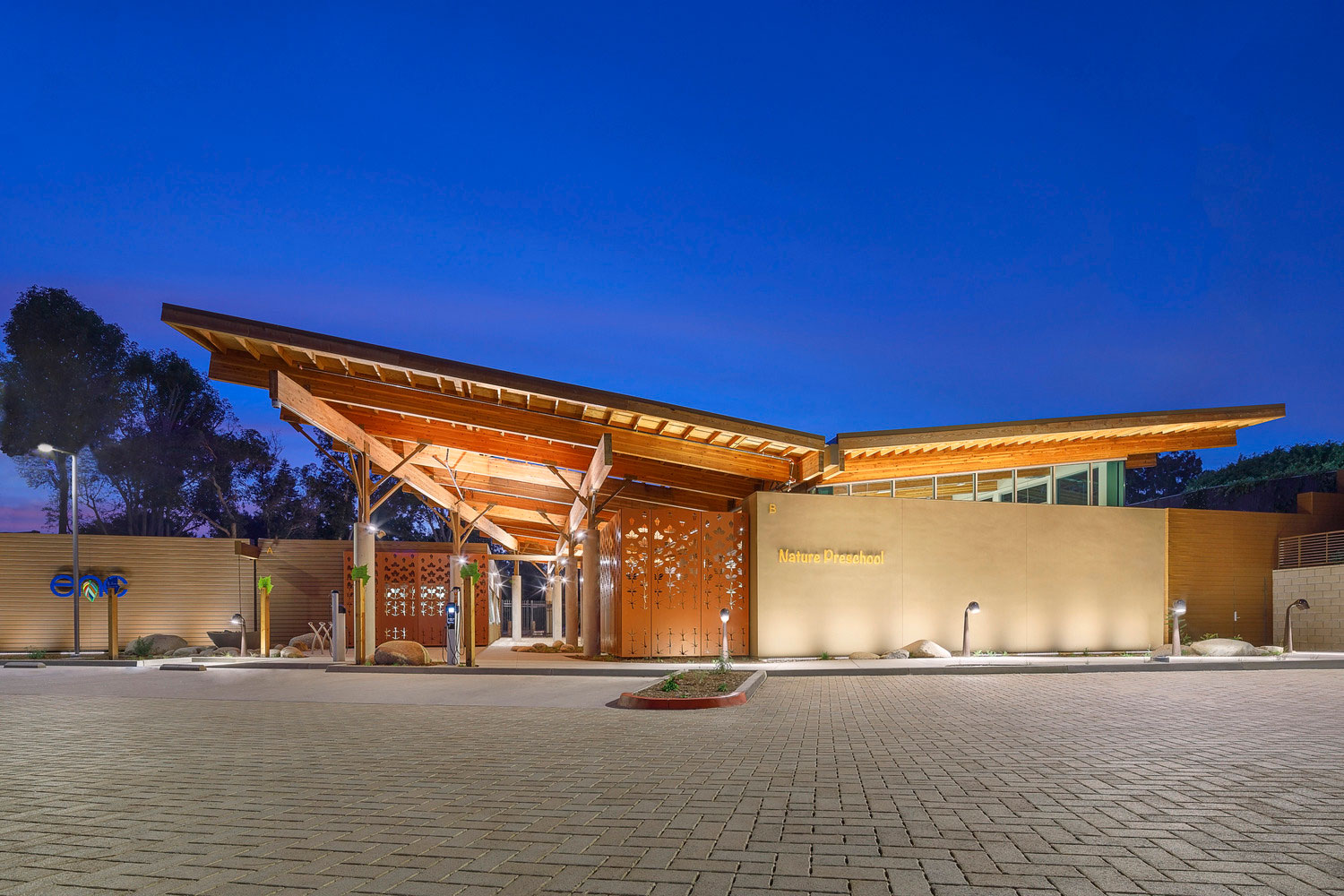
The new 8,000-square-foot, three-classroom Environmental Nature Center (ENC) Preschool is the second LEED Platinum Net Zero building on ENC’s 4.7-acre campus in Newport Beach. Photo by Cris Costea Photography
In California the single-story wood frame ENC has been operating net positive since 2008, generating 60% more energy than it’s using. Its new preschool is predicted to be net positive, too, generating 105% of the preschool’s power needs. No natural gas is used in the building, and PV panels supply 100% of the ENC’s power.
D’Amato says the design of the ENC Preschool takes full advantage of the coastal climate. Ocean breezes pass through low-intake windows along the south while excess hot air rises up the sloped ceiling and exhales out high operable windows along the north. The steep-pitched roof accommodates a large photovoltaic array set at the best angle for southern sun exposure. “We researched historical climate data, which made it clear the site was ideally suited for a naturally ventilated building. We were able to eliminate the need for mechanical ventilation with operable windows, large sliding glass doors, and efficient ceiling fans to enhance air movement. The buildings are oriented in courtyard clusters with deep roof overhangs, creating shaded outdoor areas that protect the building openings from direct solar heat gain.”
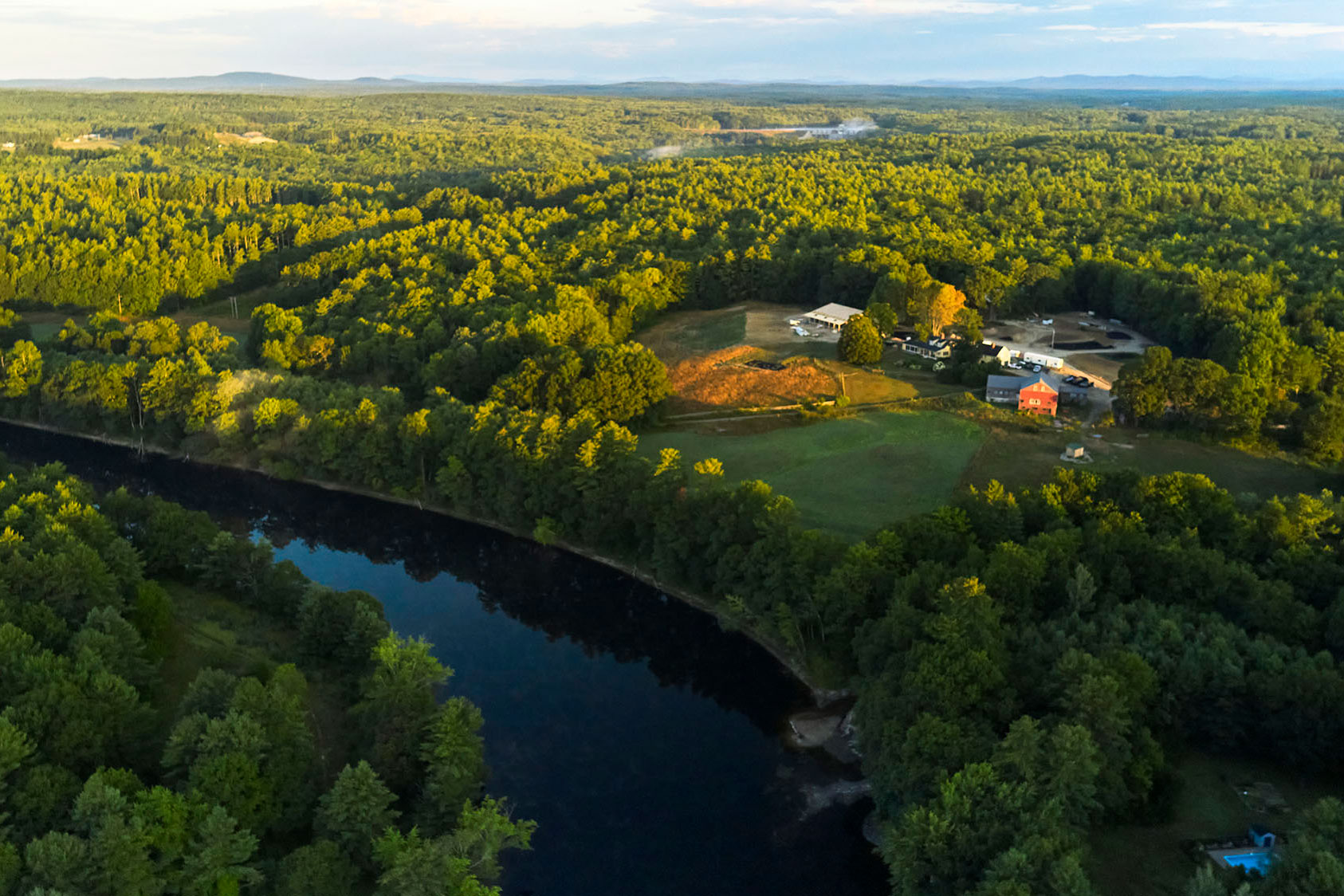
The Ecology School will come to life thanks to the efforts of Kaplan Thompson Architects, Scott Simons Architects, Briburn, and Richardson & Associates. The firms partnered with landscape ecology analysts to understand the site’s potential and the school’s goals for improving every inch of its diverse riverfront property. Courtesy of Kaplan Thompson Architects
On a historic 105-acre farm on the Saco River in Maine, Kaplan Thompson Architects is on a quest to build the most sustainable building in the Northeast. There, work has begun on The Ecology School, designed to achieve the Living Building Challenge 3.1 certification. A big part of the plan to achieve that designation is tied to energy, according to Caitlin Brooke, marketing manager at The Ecology School.
The building will have more than 700 solar panels onsite to support the goal of producing 105% net positive energy. “These panels will produce 330,000 Kwh per year, which is equivalent to removing 49.5 cars from the road each year, 257,000 pounds of coal burned, or 29,700,000 smartphones charged,” Brooke says.
The Ecology School is a nonprofit ecology education center for students of all ages to explore nature through experiential programming. Plans for the new 9,000-square-foot dormitory and 7,000-square-foot dining commons include using more than 200,000 board feet of local Maine wood.
“At River Bend Farm, rising to the Living Building Challenge and asking for spaces to give more than they take from the environment around them is a ‘live what you learn’ experience,” Brooke says. “You become a living example of how all systems in our world are connected and how daily living can have a positive impact on our environmental health, not a drain.”
The Ecology School campus will also have a non-combustion, all electric-powered kitchen, permaculture landscaping, a working agroecology farm, and other educational assets.
Material Selection
Material selection plays a major part in reaching sustainability certifications across projects. At Westwood Hills Nature Center the design team chose Sustainable Forestry Initiative (SFI)–certified wood to construct the building’s structure as well as frame all interior walls. Bird-friendly glass is used in a couple of ways, including in the exhibit area, where large areas of glass from head height down to the floor appear to be clear but are actually coated with a UV-reflective coating birds can see so they won’t fly into the glass. “We did a lot of research—bird friendly glass and testing is an evolving arena—and worked closely with Pella windows to customize the glass for bird safety,” Waguespack says.
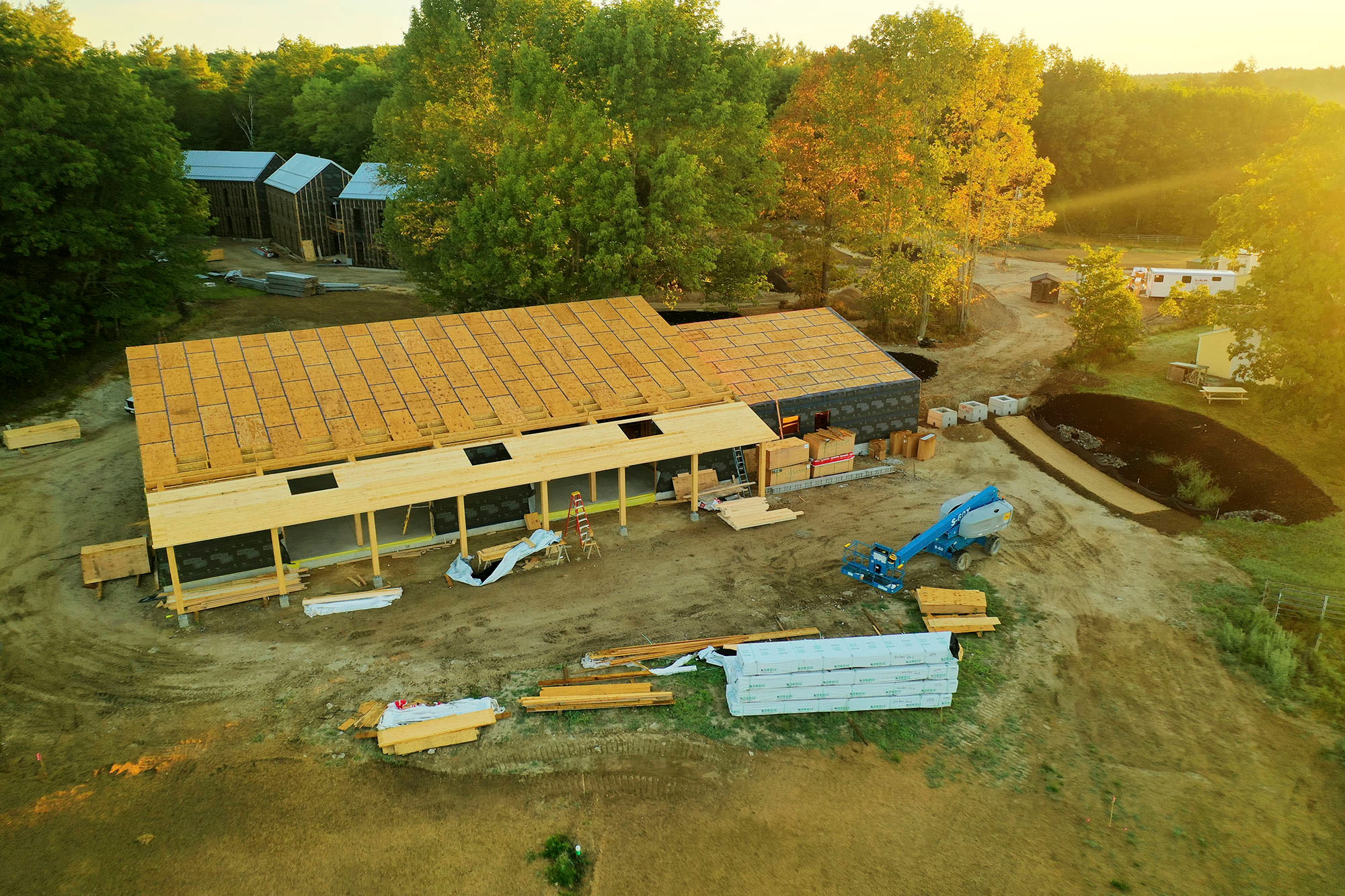
The Ecology School’s 105-acre property is under conservation easement with Maine Farmland Trust. Briburn designed the dormitory and Scott Simons Architects designed the dining commons, the latter of which draws inspiration from the property’s 1794 farmhouse. The FSC wall panels and trusses came from Hancock Lumber, a local white pine company that harvests from their own timber land and manufactures their own wood products. Courtesy of The Ecology School
At The Ecology School, Kaplan Thompson Architect Jesse Thompson says the team was able to bring in an incredible suite of local, sustainable, low-embodied energy materials everyone was proud of, including Forest Stewardship Council (FSC)–certified wood.
Thompson says the team is also proud of the school’s planned fossil fuel–free, all-electric commercial kitchen. “Combustion is banned in all Living Building Challenge projects, but it’s what most kitchens run on. It was eye-opening to understand just how much energy goes into cooking and cleanup for up to 600 meals served per day. The energy use of the dishwasher alone uses as much energy as the entire school dormitory for up to 140 kids. Seeing a scratch-cooking kitchen like this be 100% solar powered is a huge victory,” he says.
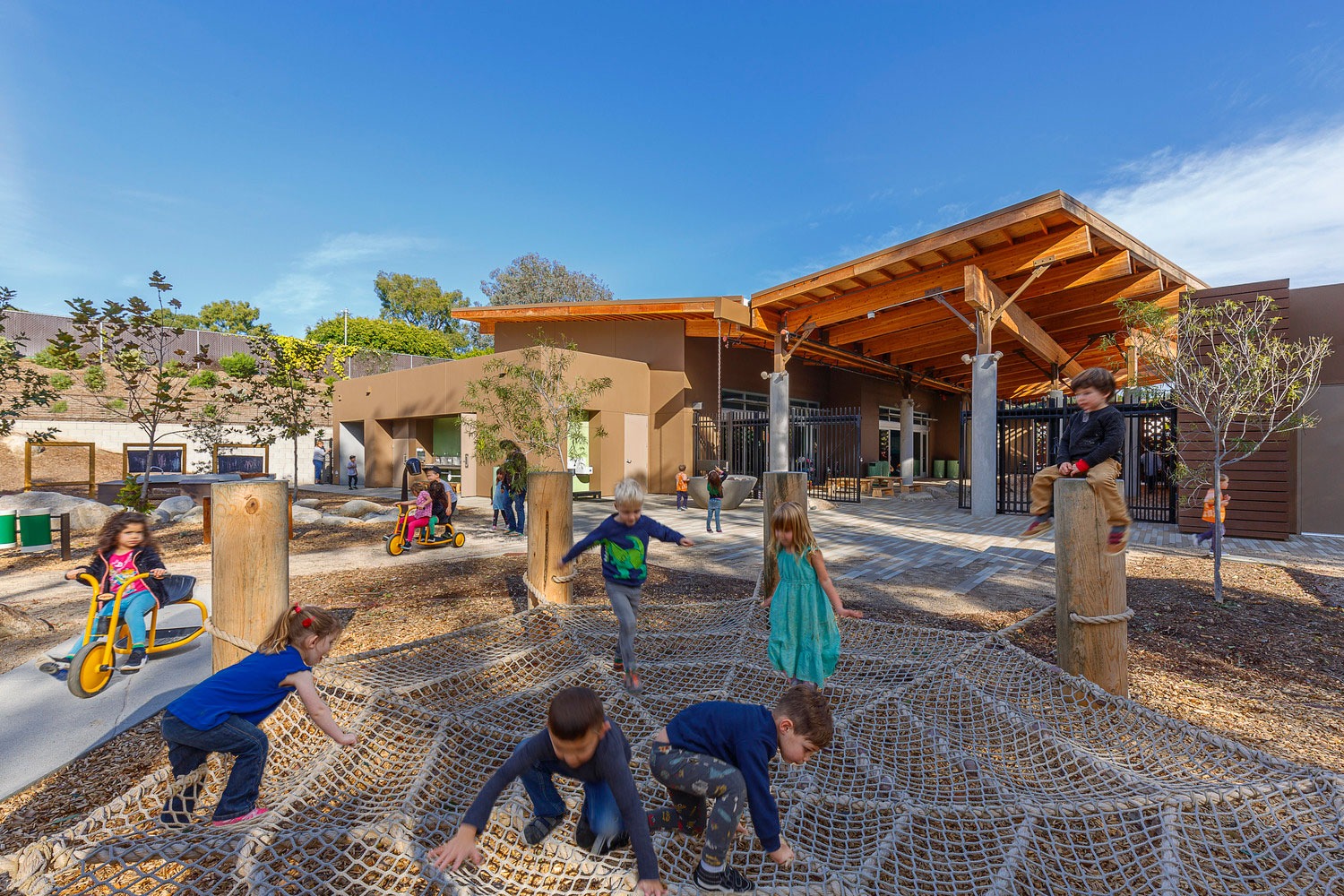
The ENC Preschool was designed for maximum flexibility, with large classrooms and movable furniture. Large sliding glass doors allow for classes to extend to the outdoors when needed, effectively doubling the room sizes. Photo by Cris Costea Photography
LPA also used timber FSC-certified wood as the primary building material in the ENC Preschool, using timber as the primary structural and framing system for cost and life-cycle reasons.
That attention to only the best and most natural materials extended beyond structural choices, though, as the preschool’s playground uses boulders, logs, and tree stumps to provide opportunities for kids to explore, and paths throughout the site are made of natural, permeable materials like decomposed granite and bark mulch. Composite siding on the building’s exterior is made of wood and plastic scraps, saving them from the landfill. Fly ash was used in concrete caissons to reduce the carbon footprint and material cost. A light-colored roof and brick paving, used in the parking lots, reduces the heat island effect. The use of carbon neutral and climate positive materials like the CLT roof and timber frame construction result in positive outcomes in the life-cycle analysis of the new building.
Engaging with Nature
Across projects these architects emphasize that the mission of spaces like these is to get people out and excited about the environment—again, without disturbing what’s there.
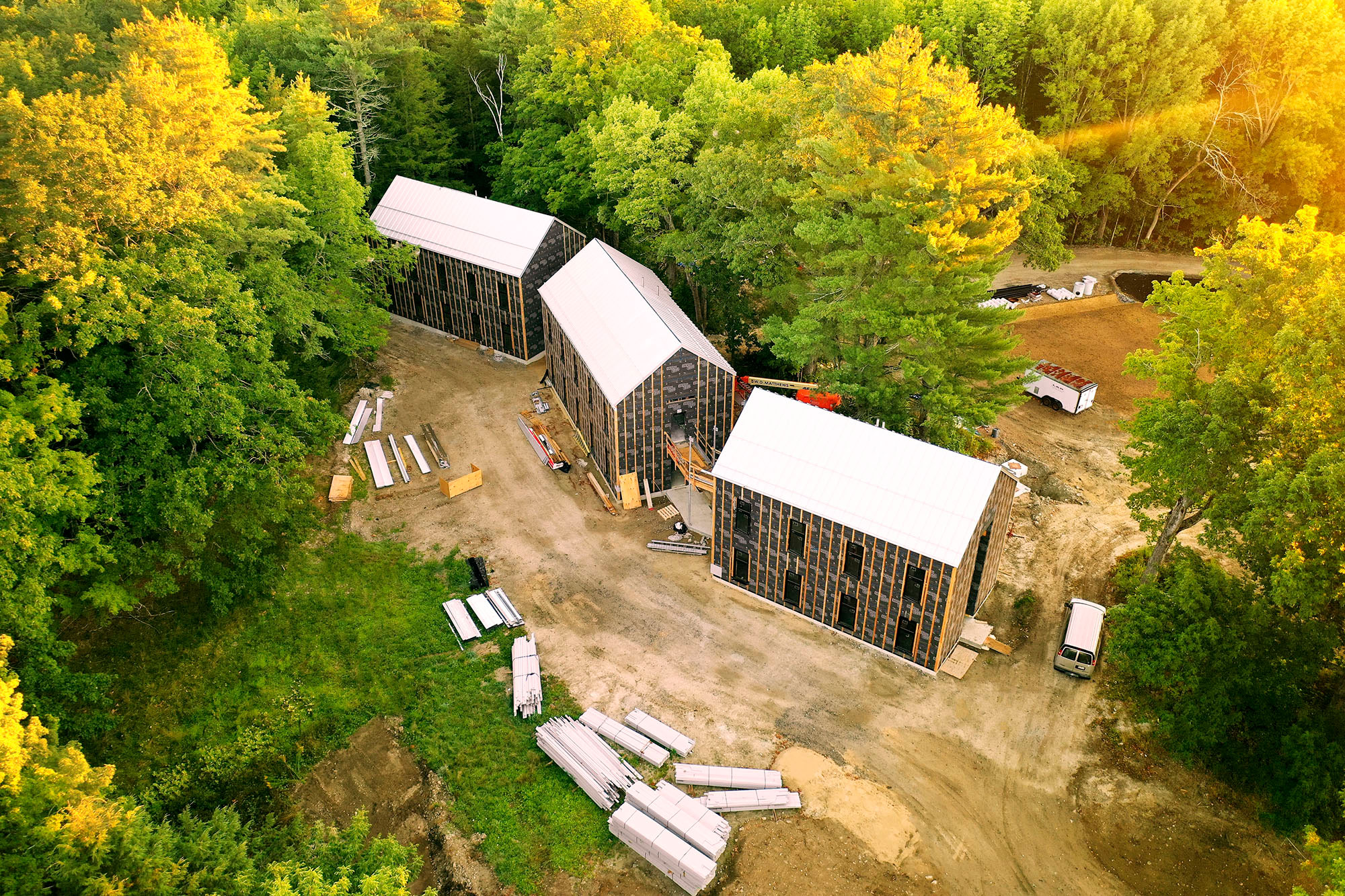
The Ecology School is anticipated to be complete by December 2020. Courtesy of Kaplan Thompson Architects
At The Ecology School in Maine, the buildings were placed to work with the natural landscape, “not to bulldoze our way to ideal placements,” Brooke says. The dormitory is nestled along a naturally occurring window, right up against the forest, making for a peaceful setting surrounded by trees. The Dining Commons is perched atop a high point in the topography, adjacent to the farmhouse, with beautiful glulam beams from Nordic Structures. The view from the Dining Commons looks out over the farm fields and Saco River below.
In California, it’s all about providing a hands-on experience. “The preschool is designed so kids get dirty,” D’Amato says. “They want the students to get up out of the classroom environment and get out in nature and learn.”
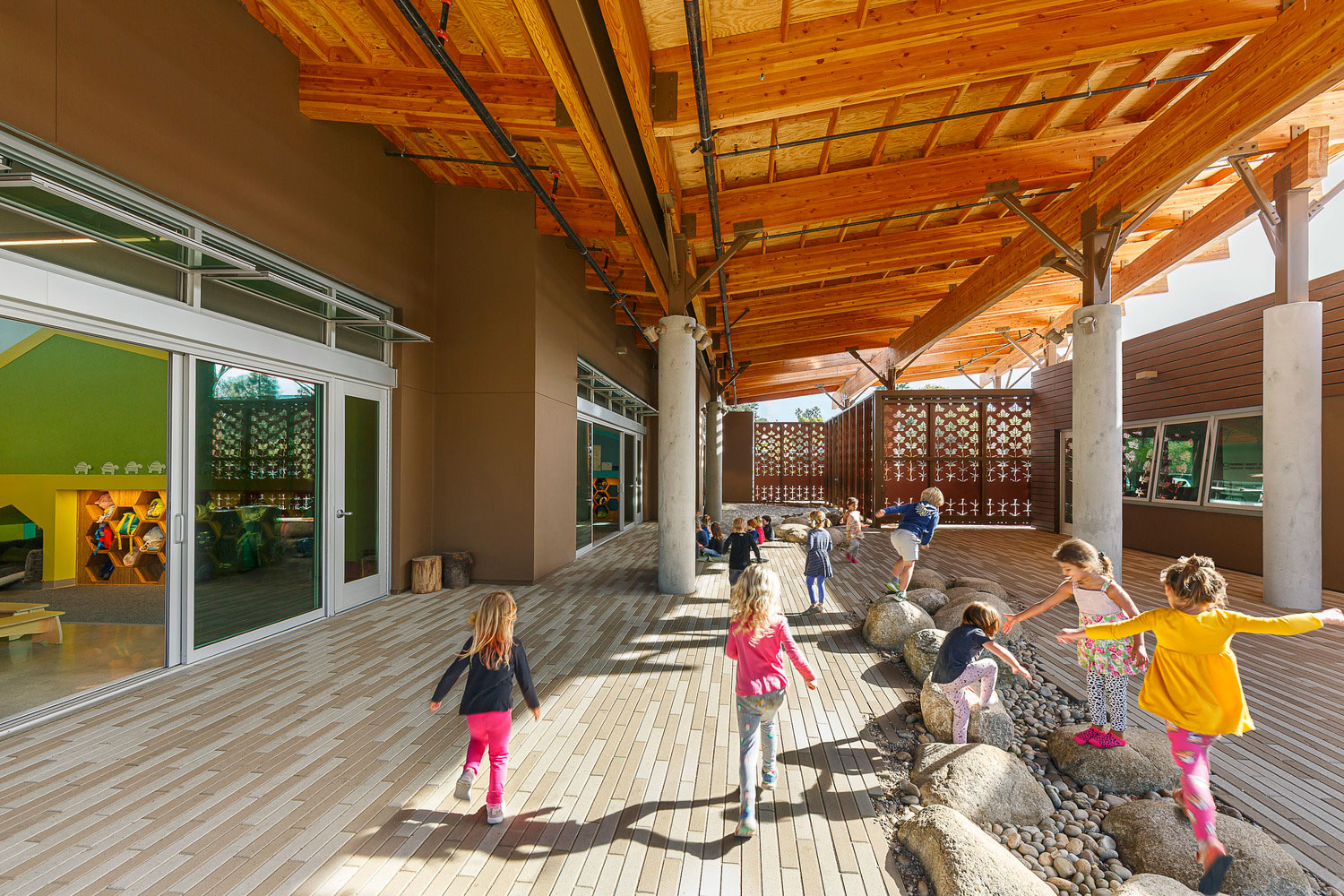
The ENC Preschool incorporates repurposed materials and has plenty of room for children to roam and learn while playing. Photo by Cris Costea Photography
The ENC Preschool’s classrooms open to a central courtyard that then connects to the nature learning center. The nature learning center is divided up into three zones based on the national parks of California—Sequoia, Joshua Tree, and Yosemite.
“Every area is designed as a learning environment. In one clearing there are little tree stumps where the kids can sit and it becomes an outdoor classroom. There’s an awesome trike path around the entire outdoor play area, and along this trike park there are makeshift musical instruments. They don’t look like musical instruments, but there are nature elements you can actually play and they’ll create music,” D’Amato says. “There are also areas for kids to climb over and into and get into the mud and roll down hills—and it’s all very intentional. It looks very organic, but it’s all intended to be used and played with. It’s all about understanding how these outdoor environments can teach.”

